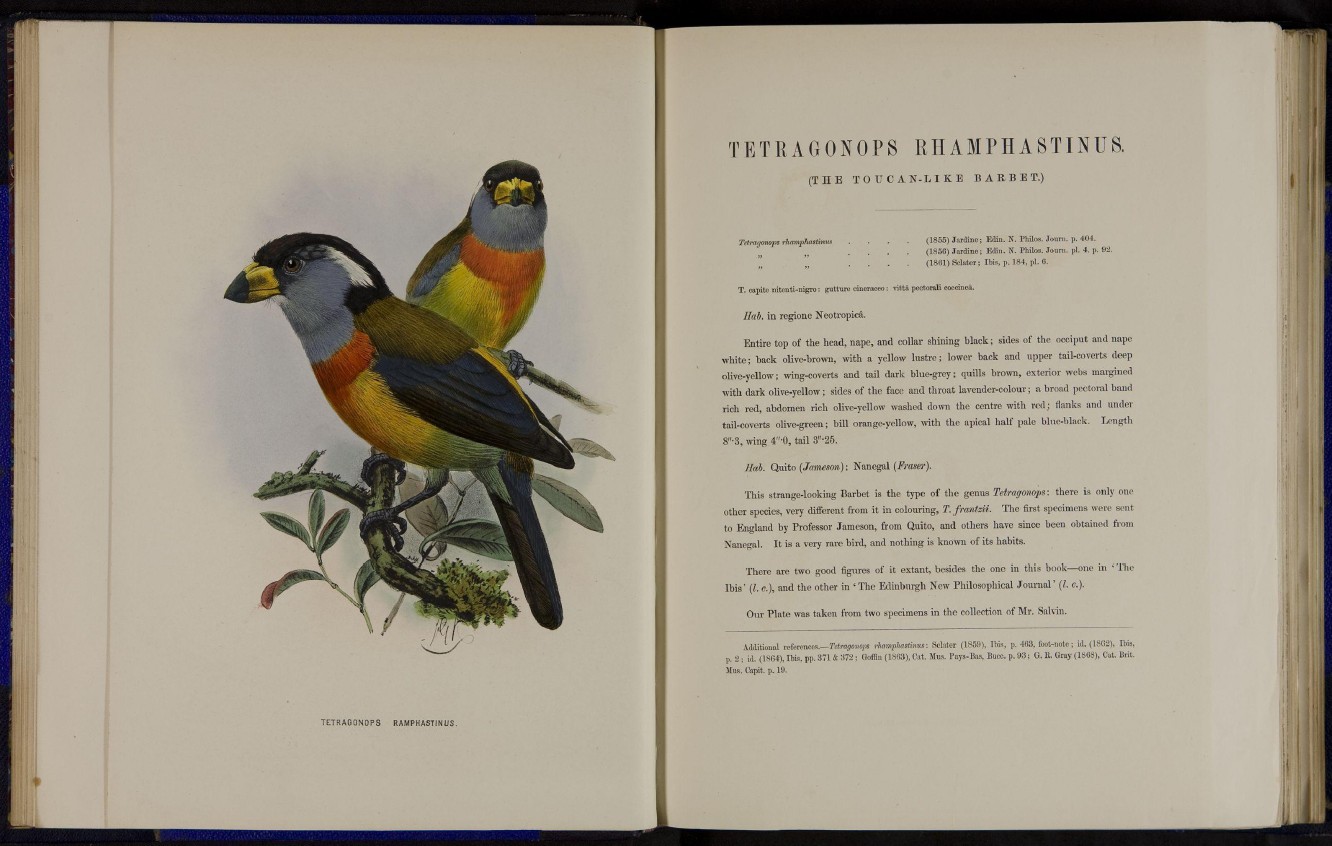
TETRAGONOPS R A M P H A S T I N U S.
T E T R A G O N O P S RH A M P H A S T I N U S .
( T H E T O U C A N - L I K E B A R B E T .)
Tetragonops rhamphasliwus . . . . (1855) Jardine; Eclin. N. Philos. Journ. p. 404.
. . . . (1856) Jardine; Edin. N. Philos. Journ. pi. 4. p. 92.
. . . . (1861)Sclater; Ibis, p. 184, pi. 6.
T. capitc nitcnti-nigro: gutturo cineraceo : vitta pectorali coccinea.
Hab. in regione Neotropica.
Entire top of t h e head, nape, and collar shining black; sides of t h e occiput and nape
w h i t e ; back olive-brown, with a yellow l u s t r e ; lower back and upper tail-coverts deep
olive-yellow; wing-coverts and tail dark blue-grey; quills brown, exterior webs margined
with dark olive-yellow; sides of t h e face and t h r o a t lavender-colour; a broad pectoral band
rich red, abdomen rich olive-yellow washed down the centre with red; flanks and under
tail-coverts olive-green; bill orange-yellow, with the apical half pale blue-black. Length
8"-3, wing 4"-0, tail 3"-25.
Hab. Quito (Jameson); Nanegal (Fraser).
This strange-looking Barbet is the type of t h e genus Tetragonops: there is only one
other species, very different from it in colouring, T. frantzii. The first specimens were sent
to England by Professor Jameson, from Quito, and others have since been obtained from
Nanegal. It is a very rare bird, and n o t h i n g is known of its habits.
There are two good figures of it extant, besides the one in this book—one in ' The
I b i s ' (I. c), and t h e other in ' T h e Edinburgh New Philosophical J o u r n a l ' (I. <?.).
Our P l a t e was t a k en from two specimens in t h e collection of Mr. Salvin.
Additional references.—Tetragonops rhamphastinus: Sclater (1S59), Ibis, p. 463, foot-note; id. (1862), Ibis,
p. 2 ; id. (1864), Ibis, pp. 371 & 3 7 2 : Ooffin (1863), Cat. Mus. Pays-Bas, Bucc. p. 9 3 ; G. R. Gray (1868), Cat. Brit.
Mus. Capit. p. 19.